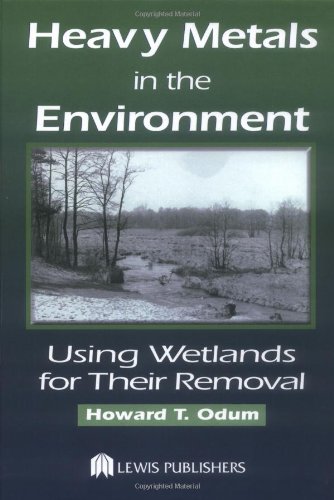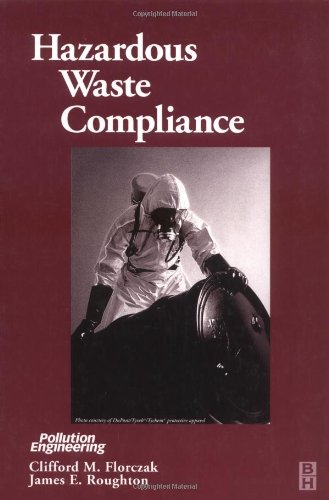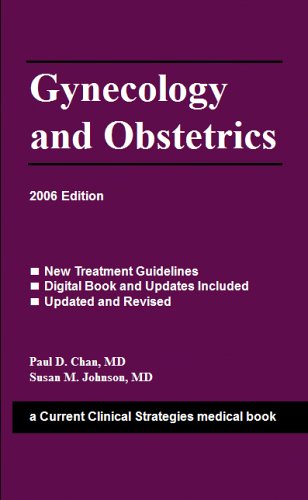Howard T. Odum9781566704014, 1-56670-401-4
Table of contents :
Heavy Metals in the Environment: Using Wetlands for Their Removal……Page 2
Foreword……Page 4
Acknowledgments……Page 5
Contents……Page 6
References……Page 0
References……Page 10
PART I: Introduction and Background……Page 32
CONTENTS……Page 33
SAPP SWAMP IN FLORIDA……Page 35
BIALA RIVER MARSHES IN POLAND……Page 36
MODELS AND SIMULATION……Page 38
MICROCOSMS……Page 39
EVALUATION……Page 42
ENVIRONMENTAL HEALTH FOR HUMANITY……Page 50
ECOTOXICOLOGY……Page 51
HEAVY METALS IN ENVIRONMENT……Page 52
ORGANIZATION OF HEAVY METAL CYCLES……Page 53
TOXICITY……Page 54
INITIATIVES IN INDUSTRIAL ECOLOGY……Page 55
CONTENTS……Page 57
MINING AND USE OF LEAD……Page 58
Lead and Humic Substance……Page 59
LEAD TOXICITY AND HEALTH……Page 60
LEAD DISTRIBUTION IN THE ENVIRONMENT……Page 61
Lead in Waters and Sediments……Page 62
Lead in Soils……Page 63
Lead in Plants……Page 64
Lead Uptake by Other Organisms……Page 65
Lead with Sewage Sludge Application……Page 66
LEAD IN WETLANDS……Page 67
Absorption on the Negative Charges of Organic Matter and Clays……Page 69
Heavy Metals in Florida Wetlands……Page 70
Bioremediation……Page 71
Precipitation and Coagulation……Page 72
Activated Sludge……Page 73
SIMULATION MODELS OF HEAVY METALS……Page 74
CONTENTS……Page 77
MATERIAL CYCLES IN THE HIERARCHY OF THE EARTH……Page 79
BIOGEOCHEMICAL BUDGETS……Page 82
EMERGY OF MATERIALS IN A BIOGEOCHEMICAL CYCLE……Page 86
EMERGY PER MASS OF LEAD……Page 87
THE WETLAND AS A HEAVY METAL FILTER……Page 88
ECOSYSTEMS DIAGRAM SHOWING MECHANISMS……Page 89
SPATIAL PATTERN OF DISPERSAL……Page 90
FREQUENCY DISTRIBUTIONS……Page 93
HUMAN INTERACTIONS WITH LEAD……Page 95
EVALUATION PERSPECTIVES……Page 96
PART II: Lead in a Cypress-Gum Swamp, Jackson County, Florida……Page 97
CONTENTS……Page 98
GREEN LEAF AREA……Page 99
METABOLISM OF THE UNDERWATER ECOSYSTEM……Page 102
INVERTEBRATE ANIMALS……Page 104
OVERVIEW CONCLUSION……Page 106
CONTENTS……Page 108
LEAD IN SEDIMENTS……Page 109
BINDING OF LEAD TO HUMIC SUBSTANCES……Page 111
CHAPTER 7: Experiments with Lead and Acid in Wetland Microcosms……Page 113
CONTENTS……Page 116
CALIBRATION……Page 118
TYPICAL SIMULATION……Page 119
PART III: Lead and Wetlands in Poland……Page 120
INTRODUCTION……Page 121
METHODS……Page 122
Soils and Sediments……Page 124
Diversity……Page 129
Upstream–Downstream Measurements……Page 131
PROPOSAL TO RESTORE WATER FLOW OVER THE WETLAND……Page 133
CONTENTS……Page 138
LEAD AND ZINC ORES PROCESSING……Page 139
CONSUMPTION OF LEAD AND ZINC……Page 140
POLLUTION OF THE SOIL BY LEAD……Page 141
AIR POLLUTION……Page 142
CONTENTS……Page 143
Emergy Evaluation……Page 144
Economic Valuation……Page 146
Energy and Emergy Evaluation……Page 147
Economic Analysis……Page 148
Emergy Evaluation of Impacted Wetlands……Page 152
Emergy Evaluation of Lead Smelter-Chemical Recovery System……Page 154
Comparison of Treatment Systems……Page 156
Economic Analysis Using Money……Page 157
Economic Valuation of Wetland Lead Retention……Page 159
Comparison of Emergy and Economic Evaluations……Page 160
Implications for Environmental Policy……Page 161
SUMMARY AND CONCLUSIONS……Page 162
ACKNOWLEDGMENTS……Page 163
PART IV: Value and Policy……Page 164
METHODS……Page 165
EMERGY EVALUATION OF WETLAND TREATMENT……Page 166
Wastewater Contributions……Page 167
COMPARISON OF EMERGY FLOWS OF WETLAND AND TECHNOLOGICAL TREATMENT……Page 169
INTRODUCTION……Page 172
National Environmental Policy Act of 1969 (NEPA)……Page 173
Comprehensive Environmental Response, Compensation and Liability Act of 1980 (ERCLA)……Page 175
The Resource Conservation and Recovery Act of 1976 (RCRA)……Page 176
Clean Water Act (CWA)……Page 178
THE INDUSTRIAL–ECOLOGICAL SYSTEM……Page 179
SUMMARY……Page 184
SUGGESTED POLICIES……Page 186
APPENDIX A1: Symbols Used in Systems Diagrams……Page 189
PRODUCER SURPLUS MEASURED BY REPLACEMENT COST METHOD……Page 190
CALCULATIONS OF COST AND BENEFITS OF THE SWAMP……Page 193
CAUSTIC SODA……Page 195
LEAD……Page 199
APPENDIX A12: Emergy Evaluation of Poland……Page 203
APPENDIX A13: References to Laws Cited in Chapter 13……Page 214
APPENDIX A4: Biogeochemical Cycle of Lead and the Energy Hierarchy……Page 216
CALCULATION OF DIFFUSION CONSTANT……Page 219
WATER LILY LEAF AREA INDEX……Page 220
CANOPY LEAF AREA INDEX……Page 221
PROCESSING, IDENTIFICATION, AND ANALYSIS……Page 222
SEEDLING SURVIVAL……Page 223
APPENDIX A5B: Data on Biota in Sapp Swamp……Page 225
ANALYSIS OF SEDIMENT AND VEGETATION TISSUE……Page 229
INSTRUMENTATION ANALYSES……Page 230
DIALYSIS PROCEDURES FOR MEASURING LEAD BINDING TO HUMIC SUBSTANCES……Page 231
COMPLEXING CAPACITY DETERMINATION AND SCATCHARD PLOT METHODOLOGY……Page 232
APPENDIX A6B: Chemical Data on the Cypress-Gum Swamps of Steele City Bay, Jackson County, Florida……Page 235
SAMPLING AND MEASUREMENTS……Page 243
STATISTICAL ANALYSIS……Page 244
APPENDIX A8: Equations, Programs, and Calibration Table for Simulation Models……Page 246
SITE LOCATION AND CONFIGURATION OF LAND……Page 252
HYDROLOGY……Page 253
HISTORY OF THE BIALA RIVER WETLAND……Page 254
RIVER LEVEL……Page 255
QUALITY OF WASTEWATERS FLOWING INTO THE WETLAND……Page 256
Precipitation……Page 259
GEOLOGICAL CONDITIONS……Page 260
ANALYSES OF SOIL AND ACCUMULATED SEDIMENTS……Page 261
ZINC AND LEAD DISTRIBUTION IN SEDIMENTS……Page 266
VALLEY ZONES……Page 271
COMMUNITY TYPES……Page 273
MISSING SPECIES……Page 277
Plant Diversity……Page 278
Heavy Metal Concentration in the Plants……Page 280
MEASUREMENTS OF ZINC AND LEAD UPTAKE FROM WATER FLOW ON THE EXPERIMENTAL PLOTS……Page 285
DETERMINATION OF A COEFFICIENT “N” FOR THE MANNING EQUATION FOR FLOW-THROUGH VEGETATION……Page 289







Reviews
There are no reviews yet.